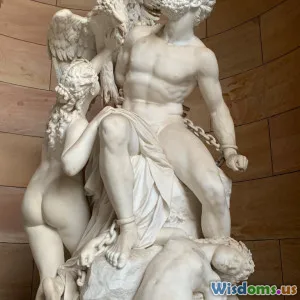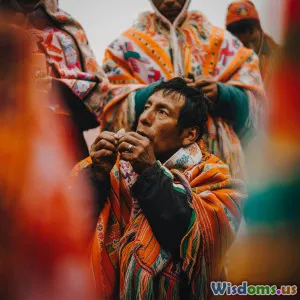
Why Do Trickster Gods Appear in So Many Different Cultures
9 min read Explore why trickster gods emerge across cultures, embodying chaos, creativity, and transformation in global mythologies. (0 Reviews)
Why Do Trickster Gods Appear in So Many Different Cultures?
Throughout the rich tapestry of global mythology, one archetype consistently emerges, captivating human imagination across continents and centuries: the trickster god. These enigmatic figures don’t fit the mold of traditional deities revered solely for their power or benevolence. Instead, tricksters revel in chaos, mischief, and wit — challenging norms and provoking change.
But why do so many cultures, seemingly disconnected by geography and time, create these cunning, boundary-breaking deities? What drives humanity to give mythic form to such unruly spirits? This article embarks on an in-depth exploration of the cultural and psychological significance that explains the recurring presence of trickster gods in mythology worldwide.
The Universal Appeal of the Trickster Archetype
Carl Jung, the famed psychologist, identified archetypes as universal, primal symbols residing within the collective unconscious. The trickster is one such archetype — a figure who defies conventional morality, upends order, and drives transformation through unpredictability.
From a psychological perspective, tricksters embody the balance between creative freedom and chaos. They allow societies to confront taboo subjects, question authority, and explore contradictions inherent in human nature.
As Joseph Campbell noted in "The Masks of God," the trickster is...
"...a universal figure who can take many forms, embodying wisdom through folly and seriousness through jest."
This universality paves the way for the trickster’s presence across diverse mythologies.
Trickster Gods Across Cultures: Key Examples
1. Loki of Norse Mythology
Loki, the Norse trickster god, embodies cunning, shape-shifting, and rebellion against the gods themselves. Despite causing significant trouble — including orchestrating events that lead to Ragnarok, the apocalypse — Loki is indispensable to the Norse pantheon. His ability to disrupt serves as a catalyst for change and renewal.
2. Anansi the Spider in West African Traditions
In many West African cultures, Anansi is the quintessential trickster — a spider who uses intelligence and guile to outwit more powerful adversaries. Anansi stories teach lessons about cleverness, survival, and the importance of storytelling itself, as he is also credited with bringing stories to humanity.
3. Coyote in Native American Legends
Among various Native American tribes, particularly the Plains and Southwestern peoples, Coyote is a trickster figure who is both a creator and a foolish prankster. His antics often explain natural phenomena or the origins of societal rules.
4. Eshu of Yoruba Religion
Eshu, the Yoruba god of trickery and communication, acts as a divine messenger and a mediator between worlds. His ambiguity ensures that balance is maintained between fate and free will, highlighting the nuanced roles tricksters play in spiritual realms.
These examples illustrate the immense variability but thematic consistency of tricksters — shapeshifters, boundary-crossers, and culture heroes simultaneously.
The Roles and Functions of Trickster Gods
Agents of Chaos and Change
Trickster gods disrupt the status quo. By sowing disorder, they challenge rigid hierarchies and conventions that could stagnate societies. This disruption is not mere destruction; it often brings about renewal or adaptation, critical for cultural evolution.
For instance, Loki’s chaos precedes Ragnarok — an apocalyptic renewal cycle central to Norse cosmology.
Bridging Worlds and Dualities
Many trickster figures act as liminal beings that traverse boundaries—between the divine and mortal, order and chaos, or life and death. Their liminality allows them to play roles unreachable by other deities.
Eshu, for instance, embodies the crossroads — a symbol of choice and ambiguity, operating between realms and ensuring communication and equilibrium.
Reflecting Human Complexity
Trickster gods mirror humanity’s dual nature. They embody contradictions: wise and foolish, holy and profane, creative and destructive. Their myths serve as cautionary tales and reflections on the human psyche.
By laughing at the gods’ mistakes and folly, societies come to terms with mortality, imperfection, and moral ambiguity.
Facilitators of Social Commentary and Satire
Many trickster stories include satire aimed at powerful figures or societal norms. Through humor and mischief, tricksters critique authority or injustice without outright rebellion.
Anansi’s tales, for example, often highlight the underdog’s cleverness over brute strength or status.
Cultural Transmission and Education
In many oral traditions, trickster tales are valuable pedagogical tools. Their engaging narratives captivate listeners, often children, conveying moral lessons, societal values, or cosmological ideas.
The stories facilitate cultural continuity by embedding didactic content into memorable narratives.
Psychological and Evolutionary Perspectives
Tricksters as Psychological Balancers
From Freudian and Jungian angles, tricksters help integrate the shadow self — the unconscious, socially unacceptable impulses — within the conscious personality.
By projecting shadow aspects onto the trickster god or figure, individuals and communities psychologically manage taboo or uncomfortable traits.
Evolutionary Function of Trickster Myths
Evolutionary psychologists suggest trickster myths bolster group cohesion by allowing controlled transgressions of social rules, enabling communities to test boundaries safely.
Moreover, humor and mischief related to tricksters promote mental flexibility and creativity — traits advantageous for survival.
Why Trickster Gods Persist Today
Even in the modern world, trickster figures thrive — think of Loki’s resurgence in popular culture through comics and cinema. Their enduring appeal lies in addressing the timeless human experience: coping with uncertainty, embracing complexity, and challenging the status quo.
The trickster archetype encourages innovation and resilience amidst upheaval and reflects humanity’s ongoing dialogue with morality and order.
Conclusion
Trickster gods' frequent appearances across diverse cultures are no coincidence; they embody fundamental aspects of human psychology, societal structure, and the natural world. Through their mischief, chaos, and wisdom, they help societies confront complexity, embrace change, and pass down vital lessons.
Far from mere pranksters of mythology, trickster gods symbolize the dynamic nature of existence itself — reminding us that creation and destruction, order and chaos, are intertwined threads in the human story.
Understanding them enriches our appreciation not only of ancient myths but of the diverse ways humanity interprets and negotiates life’s uncertainties.
References:
- Campbell, Joseph. The Masks of God: Primitive Mythology. 1962.
- Jung, C.G. Archetypes and the Collective Unconscious. 1969.
- Radin, Paul. The Trickster: A Study in American Indian Mythology. 1956.
- Archibald, Jo-Ann. ‘‘Tricksters and Transformations’’, Canadian Journal of Native Studies, 2003.
Explore more mythological insights and ancient wisdom on our continuing journey.
Rate the Post
User Reviews
Popular Posts





















